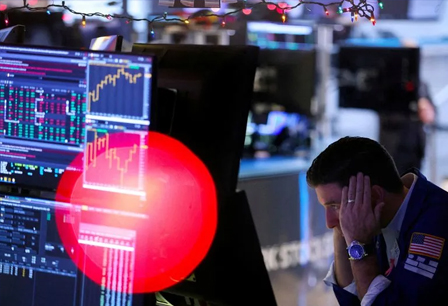As the Asia Pacific countries have continued to deal with COVID-19 outbreaks in recent months, factories across the region were forced to halt or slow production, leading to economic slowdowns in the region and disrupting global supply chains. However, accelerating vaccination rates in the region provide a sign of hope for better days ahead. Let’s examine some of the data that will guide us in monitoring the Asia Pac economies for the remainder of 2021 and into 2022.
Mixed Economic Outlook for the Region
After experiencing strong growth in the second half of 2020, the resurgence of the coronavirus in early 2021 caused many countries’ economies to contract in the first half of 2021. Hong Kong (China), India, Japan, Malaysia, and the Philippines all saw their economies shrink in the first six months of 2021. However, the region will see a return to growth for the year, led by India (9.0%) and China (8.2%), according to FactSet Economic Estimates. Growth in these two large countries will ease in 2022, while other Asia Pac countries are expected to see their economic growth accelerate, including Indonesia (3.7% to 5.3%), Malaysia (4.1% to 5.6%), Philippines (3.7% to 5.8%), and Thailand (1.1% to 3.6%).
China’s Manufacturing Sector Stalls
According to the National Bureau of Statistics (NBS), China’s manufacturing purchasing managers’ index (PMI) fell for a seventh consecutive month in October, dropping to 49.2, the lowest reading since February 2020. This was the second month in a row in which the manufacturing sector contracted, as indicated by a PMI reading below 50. The economy has been hurt in recent months by regional COVID-19 outbreaks and a growing energy crisis sparked by a coal shortage and soaring prices for coal and other fossil fuels. With many factories facing power outages, industrial production grew by just 3.1% year over year in September, the slowest growth rate since March 2020, at the height of the pandemic. While real GDP grew by just 4.9% year over year in the third quarter, analysts surveyed by FactSet expect economic growth of 8.2% this year. However, growth is expected to slow considerably in 2022, with a projected expansion of just 5.4%.
Japan Hopes for An Economic Turnaround
Japan Hopes for An Economic Turnaround
After declining 4.2% (annualized q/q%) in the first quarter, Japan’s real GDP rebounded in the second quarter, expanding by 1.9%. Private consumption, which accounts for more than half of Japan’s GDP, led the increase with growth of 3.8%. This was the key driver of growth for the quarter, as the contributions from government consumption and net exports canceled each other out. Analysts surveyed by FactSet expect growth to slow to 1.1% in the third quarter (preliminary figures will be released on November 14); however, recent data releases point to growing momentum in the fourth quarter, with analysts surveyed by FactSet expecting growth of 3.0%. A potential risk to the outlook is the ongoing global semiconductor chip shortage, which has already forced Japanese automakers to slash production in the country’s key export sector.
Australian Consumers Pull Back
The Australian economy likely slowed considerably in the third quarter as the government reinstituted lockdowns during the winter to combat the latest COVID-19 surge. With strict stay-at-home mandates in the country’s largest cities, retail sales fell sharply in July and August, followed by a modest rebound in September. In the third quarter, retail sales registered a 4.4% decline, which suggests a significant drop in the household consumption component of GDP. With household spending making up more than half of total GDP, this would be a major drag on GDP growth. Analysts surveyed by FactSet are expecting a 3.2% GDP contraction in the third quarter, the first negative growth rate since the second quarter of 2020, when the economy was dealing with the initial COVID-19 outbreak.
Auto Production Suffers as Chip Shortage Persists
India, Japan, and South Korea are three of the top motor vehicle producers in the world, with China, Germany, and the U.S. rounding out the top six. The global semiconductor chip shortage referenced above has had a significant negative impact on automakers globally, but the effects have been particularly acute for these three Asian economies looking to emerge from their pandemic-induced recessions. All three have seen year-to-date declines in their industrial production of motor vehicles.
As has been widely covered in the press, chips are in high demand for a wide range of consumer goods, but when production shifted away from automotive chips due to slumping demand early in the pandemic, pivoting back again proved difficult. Taiwan (China), the main global source of semiconductors, continues to see strong growth in its chip production, but surging global demand continues to exceed supply. In September, the country’s industrial production index for electronic parts and components was up 19.4% year over year.
The information contained in this article is not investment advice. FactSet does not endorse or recommend any investments and assumes no liability for any consequence relating directly or indirectly to any action or inaction taken based on the information contained in this article.












